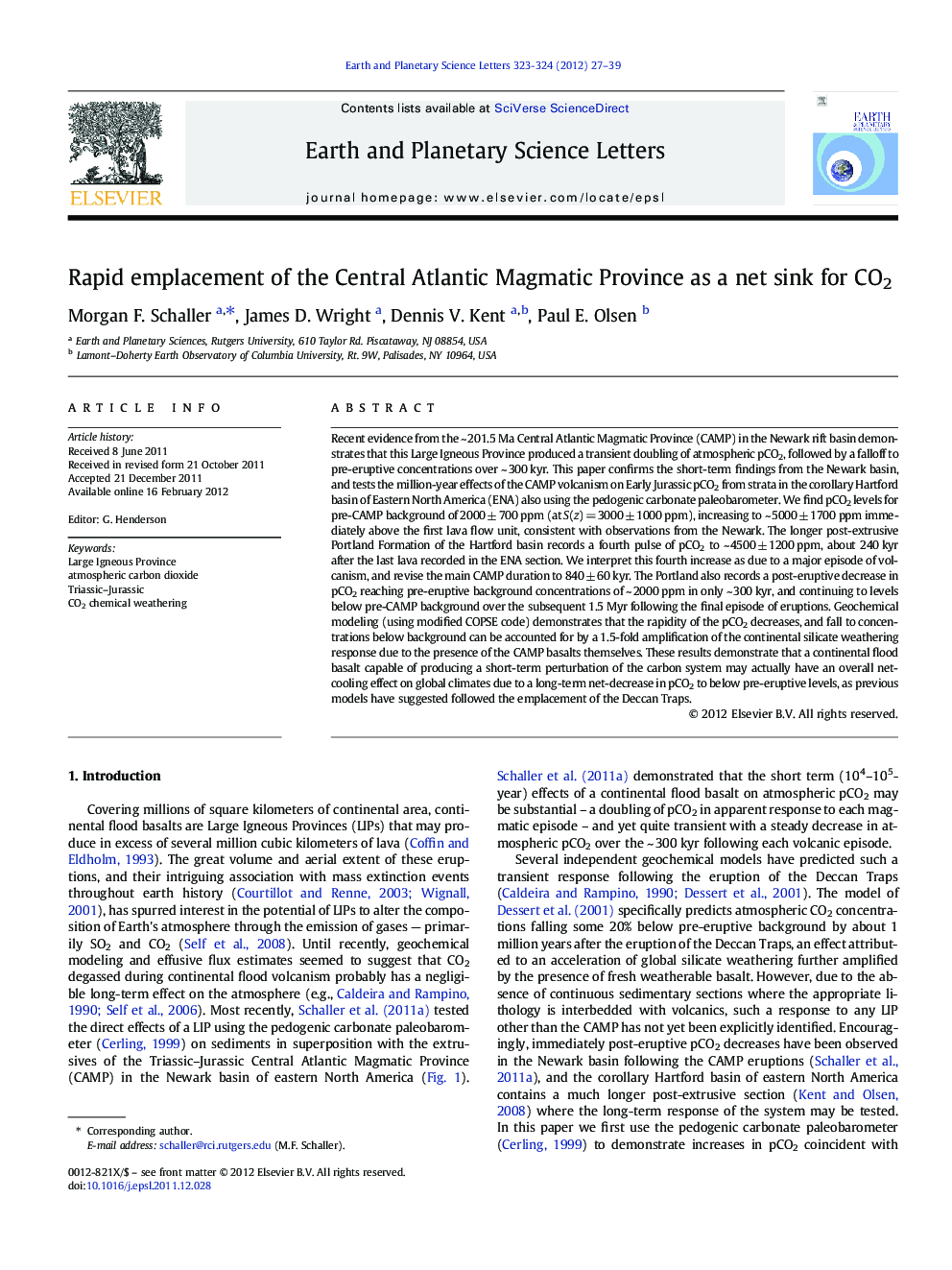| کد مقاله | کد نشریه | سال انتشار | مقاله انگلیسی | نسخه تمام متن |
|---|---|---|---|---|
| 4677553 | 1634809 | 2012 | 13 صفحه PDF | دانلود رایگان |

Recent evidence from the ~ 201.5 Ma Central Atlantic Magmatic Province (CAMP) in the Newark rift basin demonstrates that this Large Igneous Province produced a transient doubling of atmospheric pCO2, followed by a falloff to pre-eruptive concentrations over ~ 300 kyr. This paper confirms the short-term findings from the Newark basin, and tests the million-year effects of the CAMP volcanism on Early Jurassic pCO2 from strata in the corollary Hartford basin of Eastern North America (ENA) also using the pedogenic carbonate paleobarometer. We find pCO2 levels for pre-CAMP background of 2000 ± 700 ppm (at S(z) = 3000 ± 1000 ppm), increasing to ~ 5000 ± 1700 ppm immediately above the first lava flow unit, consistent with observations from the Newark. The longer post-extrusive Portland Formation of the Hartford basin records a fourth pulse of pCO2 to ~ 4500 ± 1200 ppm, about 240 kyr after the last lava recorded in the ENA section. We interpret this fourth increase as due to a major episode of volcanism, and revise the main CAMP duration to 840 ± 60 kyr. The Portland also records a post-eruptive decrease in pCO2 reaching pre-eruptive background concentrations of ~ 2000 ppm in only ~ 300 kyr, and continuing to levels below pre-CAMP background over the subsequent 1.5 Myr following the final episode of eruptions. Geochemical modeling (using modified COPSE code) demonstrates that the rapidity of the pCO2 decreases, and fall to concentrations below background can be accounted for by a 1.5-fold amplification of the continental silicate weathering response due to the presence of the CAMP basalts themselves. These results demonstrate that a continental flood basalt capable of producing a short-term perturbation of the carbon system may actually have an overall net-cooling effect on global climates due to a long-term net-decrease in pCO2 to below pre-eruptive levels, as previous models have suggested followed the emplacement of the Deccan Traps.
► Eruption of the CAMP resulted in rapid, discrete increases of atmospheric pCO2.
► Each pCO2 pulse is followed by a < 300 kyr decrease below pre-eruptive concentrations.
► A 50% amplified global weathering response accounts for a decrease below background.
► Weathering is amplified by highly reactive CAMP basalts straddling the humid tropics.
► LIPs can be net sinks for CO2 and therefore long-term net coolers of climate.
Journal: Earth and Planetary Science Letters - Volumes 323–324, 15 March 2012, Pages 27–39